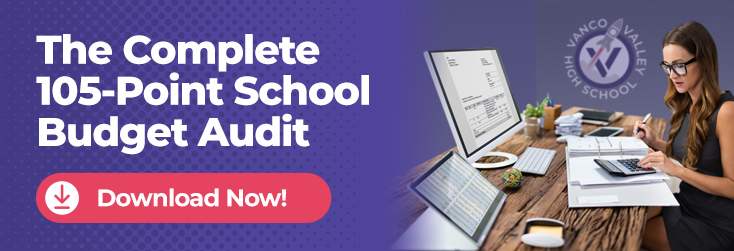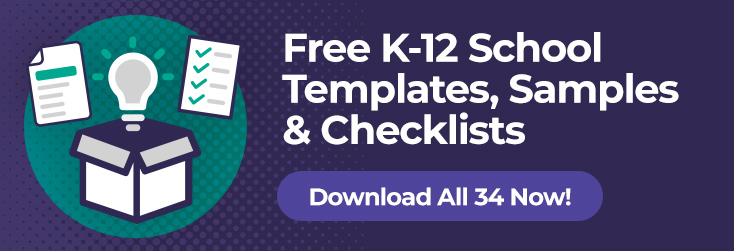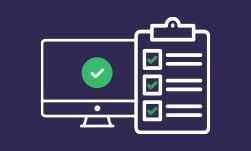![]() School management teams, including each school administrator, need to recognize their roles in the educational system and be able to prioritize what’s important in directing schools.
School management teams, including each school administrator, need to recognize their roles in the educational system and be able to prioritize what’s important in directing schools.
A school administrator has a lot of responsibility for students and everything that goes on inside a school building or in a district. Within a school district hierarchy, the school administrator provides many kinds of top-level management. That means dealing with budgets and finances, as well as student and faculty health and safety issues. It often means taking a top-level approach to evaluating school operations and optimizing results as necessary.
So, school administrators have a lot to do. They’re often evaluating many different school departments, from faculty affairs to transportation, athletics, food service and more. Through day-to-day and long-term analysis, they are expected to maintain a good understanding of how schools are doing and how they can be improved.
What Does a School Administrator Job Look Like Today?
A number of different types of school administrators work together to enhance school operations. Principals and vice principals of individual schools are administrators. At the top, there is a superintendent who is the head of administration for the district. Other kinds of administrators will have department head positions or be responsible for different aspects of school operations.
Administrators faced many challenges during the pandemic. They had to navigate staffing issues, logistics of distance learning, the need to create hybrid models and more.
One challenge cited by many experts in the wake of the pandemic was “digital equity” or providing for families with less access to broadband and IT tools. The U.S. Census determined that 93% of families were involved in some form of distance learning during 2020; that brought with it a series of logistical challenges, and schools had to pivot quickly.
There was also the struggle to maintain multiple modalities. One way to evaluate this is through a “snapshot” of some 8700 districts provided by the CDC in September of 2021, where researchers found that 96% were offering full in-person learning, 4% were offering hybrid learning, and 0.4% were offering full remote learning. With in-class learning comprising the vast majority of school models, social distancing created major demands for resources in terms of busing, cleaning buildings, and spacing students in classrooms, as well as masking requirements.
All of this puts enormous pressure on teachers and administrators as well, and though some of these demands have eased, it’s still a difficult time to prioritize as a school administrator.
Top Five Priorities for School Administrators
- When it comes to priorities management, a school administrator is likely to say that the very top priority is protecting students and faculty from harm. Schools often develop in-depth safety plans to counter internal threats. Cybersecurity can also be a factor in protecting district resources.
- Aside from health and safety, a school administrator has other high priorities as well. Budgeting and school financial management mean looking at every cost and every expense incurred by the district and trying to micromanage how money is spent. The school administrator has a general responsibility and priority to fully fund operations without cutting programs or services. This sometimes seems like a tall order with unknown types of funding issues like changing state or federal subsidies and faculty or staff pension costs, so a good school finance software platform is a wise investment.
- In general, a school administrator is responsible for communicating with a school board and other stakeholders on any issues that emerge anywhere in school operations.
- Other priorities also apply, like facilitating transportation and food service, and maintaining contracts with vendors, while also staffing internal departments. All of that is quite a lot for a busy school administrator to handle. Efficiencies are very valuable as these professionals manage both time and money to make a difference in how a school district works.
- Automation for school payments can be an effective part of that puzzle. Having neatly efficient online payment methods (such as an online ticket sales for school districts) in place can free up hours of time in school administrative offices. It can also enhance the services that schools offer to students, parents and others. For example, being able to streamline athletic payment processes for student participation fees, insurance costs, and athletic event tickets can often help to make athletic department administration much more efficient. The same is true for food service, academic registration, the performing arts department, or various kinds of educational technology fees. All kinds of school payments get easier with these modern systems, which are built for administrative use. A school administrator who is looking for an easy way to add value can check out Vanco’s online school payment system that provides this kind of automation for working smarter, not harder, in a demanding field.
Take a look and Vanco’s services and think about the many ways that this technology can empower school administrators and personnel across a school district to improve how they serve their communities.















